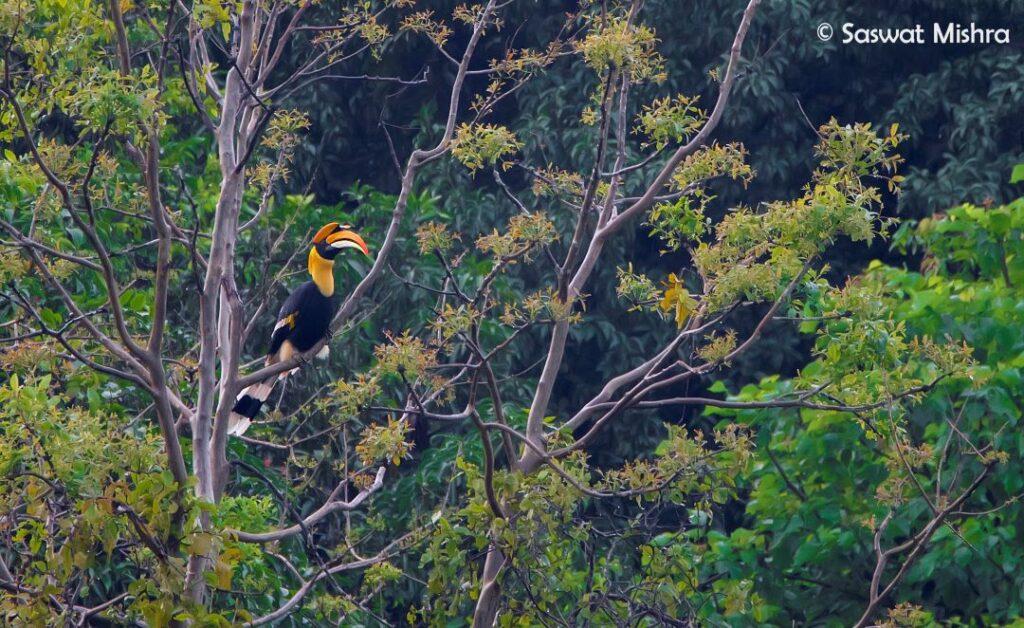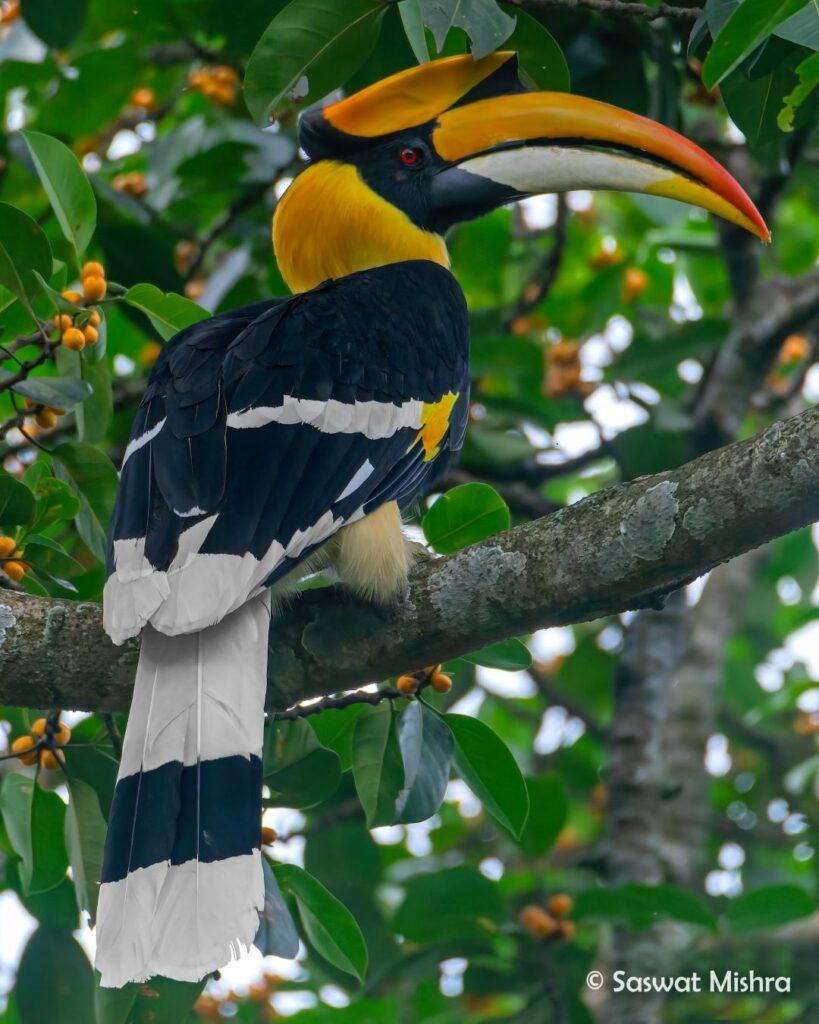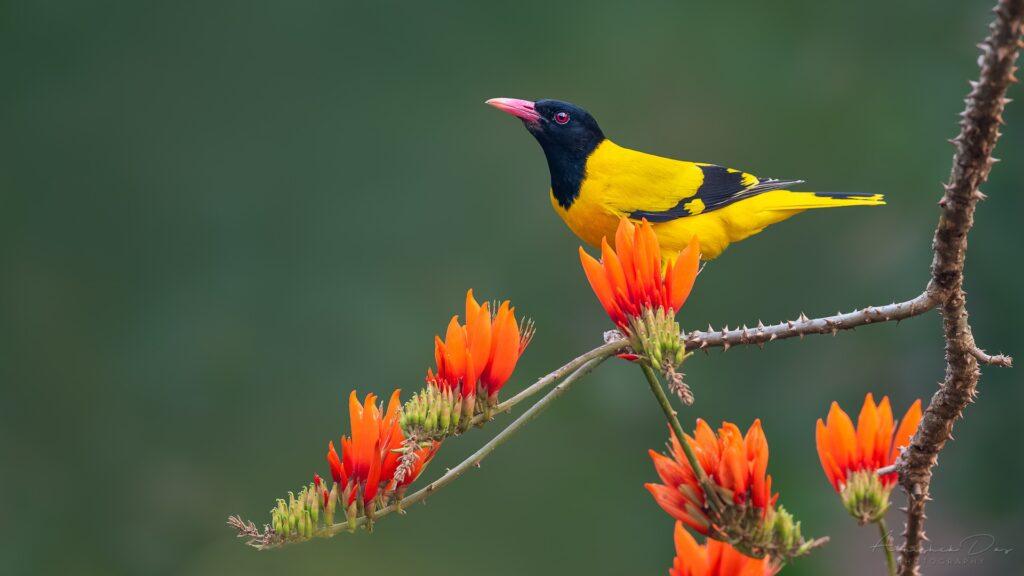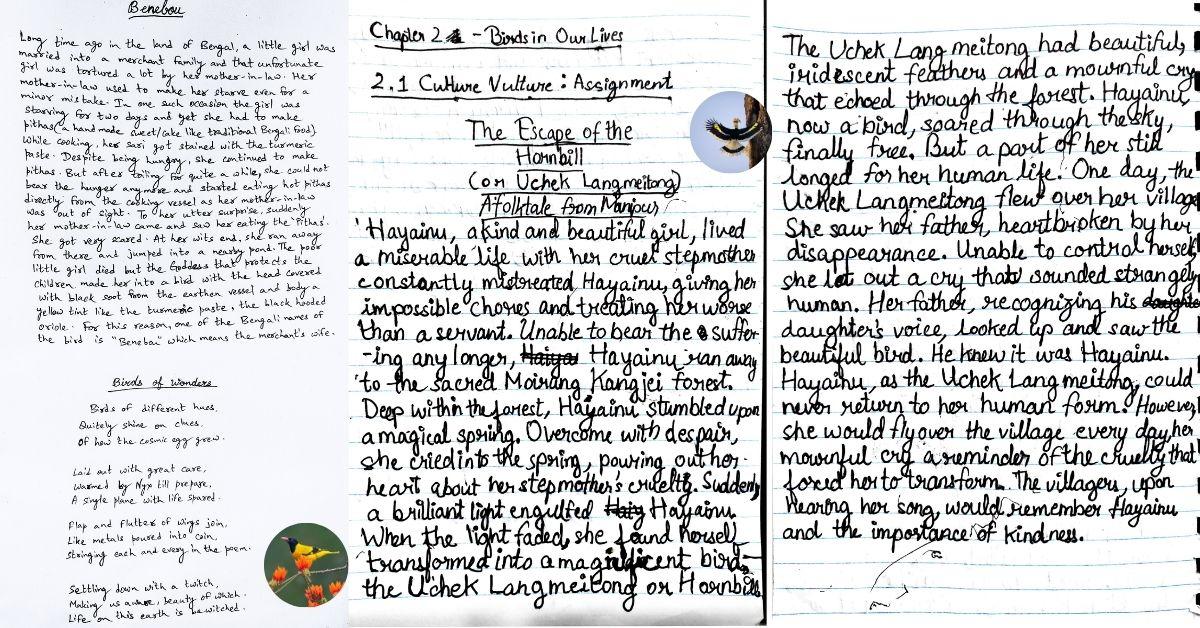In this blog series, we showcase interesting and creative assignments received as part of The Wonder of Birds free online course. We invite you to explore birds through the eyes of our learners!
Across cultures, stories often serve as mirrors reflecting human behaviour and emotions. Two folktales about birds from India, one from West Bengal and the other from Manipur, share a common theme: the cruelty of a mother-in-law toward her daughter-in-law. In both stories, the girl transforms into a bird, symbolizing freedom and resilience amidst hardship. Keep reading and get to know the birds we’re talking about and their backstories.
The Escape of Uchek Langmeitong
A folktale from Manipur
By Soubam Briti
Hayainu, a beautiful and kind girl, lived an inhumane life under her cruel stepmother, who mistreated her constantly and gave her impossible chores. Unable to bear the suffering anymore, Hayainu ran away to the sacred Moirang Kangjei forest.
Deep within the forest, she stumbled upon a magical spring. Overcome with despair, she cried into the spring, pouring out her heart about her stepmother’s cruelty. Suddenly, a brilliant light engulfed her. After the light faded, she transformed into a magnificent bird, the Uchek Langmeitong (the Hornbill).

The Uchek Langmeitong had beautiful, iridescent feathers and a mournful cry that echoed through the forest. Hayainu, now the bird, soared through the sky, finally free. But a part of her still longed for the life she lived as a human.
One day, the Uchek Langmeitong flew over her village. She saw her father, heartbroken by her disappearance. Unable to control herself, she let out a cry that sounded strangely human. Her father, recognising his daughter’s voice, looked up and saw the beautiful bird. He knew it was Hayainu.
Hayainu, as the Uchek Langmeitong, could never return to her human form. However, she flew over the village every day. Her mournful cry was a reminder of the cruelty that forced her to transform into a bird. When they heard her song, the villagers remembered Hayainu and the importance of kindness.


Benebou
A folktale from West Bengal
By Sangeeta-Murmu
Long time ago, in Bengal, a little girl was married to a merchant family. Unfortunately, the girl was tortured by her mother-in-law, who made her starve even for a minor mistake.
On one such occasion, despite starving for two days, the girl had to make ‘Pithas’ (a handmade sweet/cake-like traditional Bengali food). While cooking, her sari got stained with turmeric paste. Even though she was hungry, she continued to make pithas.
However, after toiling for quite a while, she could no longer bear the hunger and began eating hot pithas directly from the cooking vessel. At that time, her mother-in-law was out of sight. Suddenly, her mother-in-law came and saw her eating the ‘Pithas’.
The girl got very scared and ran away from there, jumping into a nearby pond and died. It is believed that the Goddess of protection for children made the little girl into a bird whose head was covered with black soot from the earthen vessel and whose body was yellow like turmeric paste.As a result of this story, the Bengali name for the bird is ‘Benebou’, which means the wife of a merchant. In English, it is the Black-hooded Oriole.

Register for our free online course to learn more about birds.


Interesting back stories